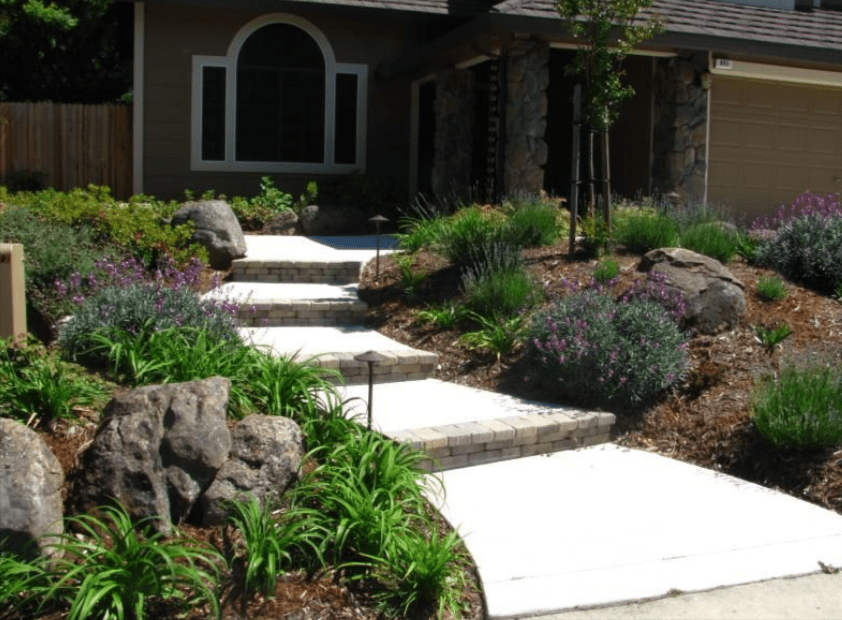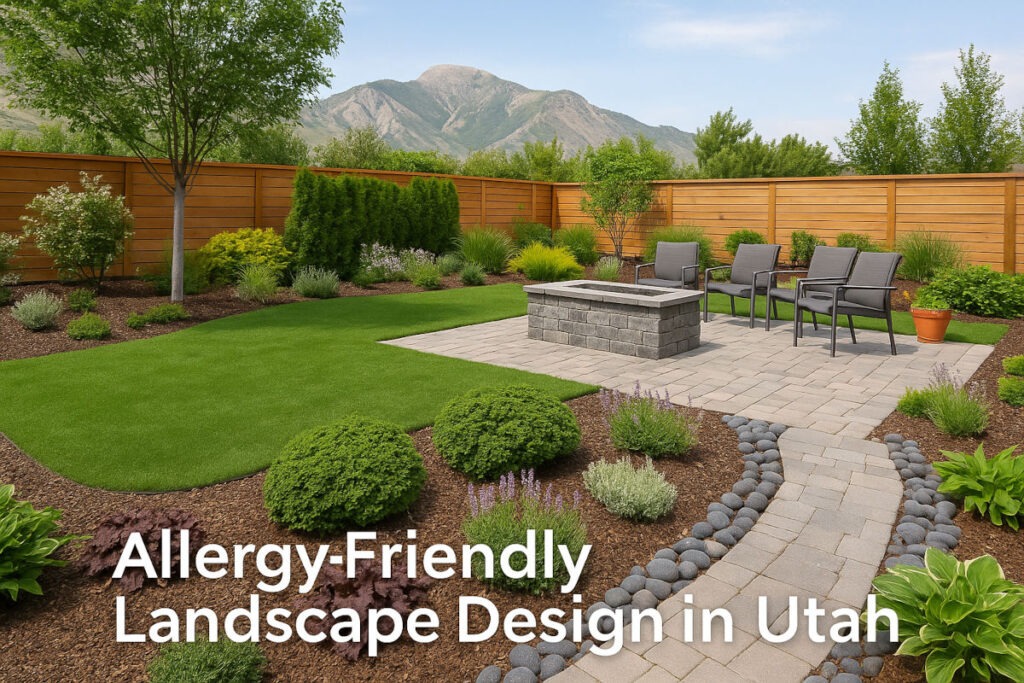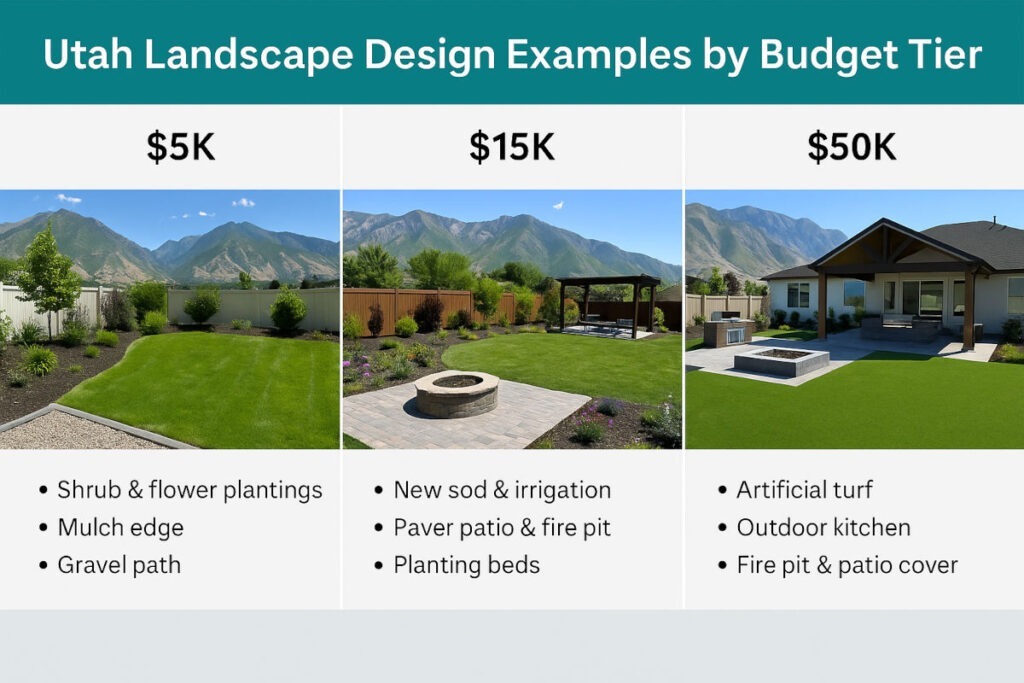Water scarcity is a growing concern in many parts of the world, and we must take steps to conserve water in all aspects of our lives. Landscaping is one area where we can significantly impact by implementing low-water solutions. In this blog post, we will explore the concept of low-water landscaping and discuss various strategies and techniques that can help create sustainable and beautiful gardens in Salt Lake City.
Understanding Low-Water Landscaping
Low-water landscaping, also known as xeriscaping, is a landscaping approach that focuses on reducing water usage while maintaining an aesthetically pleasing outdoor space. The principles of xeriscaping involve soil improvement, smart plant selection and grouping, efficient irrigation systems, and the use of mulch for water conservation.
Benefits of Low-Water Landscaping
- Water Conservation: Low-water landscaping significantly reduces water consumption, helping to conserve this valuable resource.
- Cost Savings: By using less water, homeowners can save money on their water bills and reduce maintenance costs associated with landscaping.
- Environmental Sustainability: Low-water landscaping contributes to overall environmental sustainability by reducing the strain on local water supplies.
Assessing Your Landscape and Water Needs
Before starting a low-water landscaping project, assessing your landscape and understanding your water needs is essential. Consider the local climate and water availability in your area. Conduct a soil test to determine its composition and drainage capacity. Identify potential water sources for irrigation, such as rainwater harvesting or greywater recycling.
Selecting the Right Plants for Low-Water Landscaping
Choosing the right plants is crucial in low-water landscaping. Native plants are well-adapted to the local climate and require less water than exotic species. Look for drought-resistant plant varieties that can thrive in dry conditions. Group plants with similar water requirements together to ensure efficient irrigation.
Implementing Water-Efficient Irrigation Systems
Efficient irrigation systems are key to conserving water in your landscape. Drip irrigation is popular as it delivers water directly to the plant’s root zone, minimizing evaporation and runoff. Consider installing rainwater harvesting systems to collect and store rainwater for irrigation purposes. Smart irrigation controllers and sensors can help adjust watering schedules based on weather conditions, reducing water waste.
Creating Hardscapes for Water Conservation
Hardscaping elements, such as permeable paving materials, artificial turf, gravel pathways, and retaining walls, can contribute to water conservation. Permeable paving allows water to infiltrate the soil, reducing runoff. Unlike traditional lawns, artificial turf and gravel pathways require little to no water. Retaining walls help prevent soil erosion and retain moisture in sloped areas. Incorporating water features with recirculation systems minimizes water loss.
Mulching: A Key Element for Water Retention
Mulching is crucial in low-water landscaping by reducing evaporation, regulating soil temperature, and suppressing weed growth. Organic mulches, such as wood chips or straw, help retain moisture in the soil. Inorganic mulches, like gravel or pebbles, provide effective weed control and prevent water loss.
Low-Water Landscaping Maintenance Tips
Efficient Watering:
One of the key aspects of maintaining a low-water landscape is efficient watering practices. To minimize water loss through evaporation, it is recommended to water plants deeply and infrequently. Deep watering encourages plants to develop deep root systems, making them more resilient to drought conditions. Watering during the early morning or late evening is ideal because it allows water to penetrate the soil before the day’s heat increases evaporation rates. Avoid watering during windy periods, as it can cause water to drift away from the intended area.
Proper Pruning:
Regular pruning is essential for maintaining the health and vitality of plants in a low-water landscape. By removing dead or overgrown foliage, you can promote healthy growth and reduce the water requirements of plants. Dead or damaged branches should be promptly pruned as they can drain energy and water resources from the plant. Pruning also improves air circulation around the plant, minimizing the risk of diseases requiring additional water for treatment. Proper pruning techniques, such as making clean cuts and avoiding excessive pruning, help plants conserve water and thrive.
Weed and Pest Control:
Weeds can compete with plants for water and nutrients, increasing your landscape’s water requirements. Therefore, it is important to implement effective weed control strategies. Use mulch to suppress weed growth by creating a barrier that prevents weed seeds from germinating. Hand pulling or using appropriate tools for weed removal can be an effective approach for small-scale weed control. Integrated pest management techniques should be employed to control pests without excessive water use. This involves monitoring and identifying pests, using natural predators, and applying targeted treatments when necessary.
Seasonal Adjustments:
Adapting your maintenance practices to seasonal changes and weather conditions is crucial for a low-water landscape. During heavy rainfall, you may need to adjust or temporarily suspend irrigation to prevent overwatering. Conversely, during dry periods, it may be necessary to increase watering to ensure plants receive adequate moisture. Monitoring weather forecasts and staying aware of local climate patterns will help you make informed decisions regarding watering schedules and maintenance tasks. Adjustments should also be made to fertilizer application, as excessive fertilization can lead to increased water demands.
By implementing these low-water landscaping maintenance tips, you can effectively conserve water while ensuring the health and beauty of your landscape. Efficient watering, proper pruning, weed and pest control, and seasonal adjustments will contribute to your low-water garden’s overall sustainability and success.
Conclusion
Low-water landscaping offers a sustainable solution for creating beautiful gardens while conserving water. You can achieve a thriving low-water landscape by understanding the principles, selecting appropriate plants, implementing efficient irrigation systems, incorporating hardscapes, utilizing mulching, and following proper maintenance practices. Embracing low-water landscaping contributes to water conservation efforts and promotes environmental sustainability. At Millburn Landscaping & Design, our waterwise designs align perfectly with LocalScapes’ water conservation initiatives. Our irrigation installation techniques are state-of-the-art, and we are proud partners with industry leaders Rain Bird and Netafim USA. As new “waterwise” products emerge, we are quick to incorporate them into our clients’ projects, ensuring they benefit from the latest advancements in water efficiency. By embracing these innovative solutions, we not only help our clients save water and reduce their bills but also make them eligible for local water rebates.Let’s create stunning gardens with us; contact Millburn Landscaping & Design today to request an estimate, and trust us to help you achieve the perfect yard!




